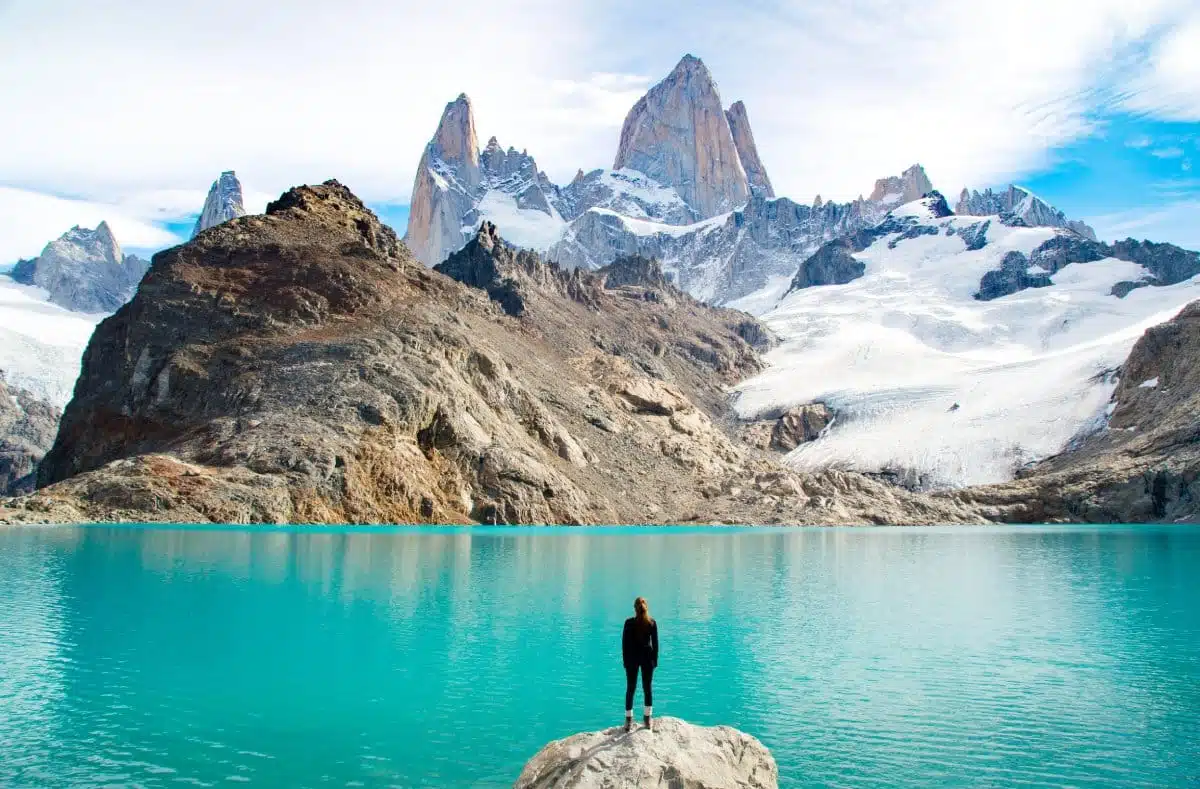As the digital leash grows ever tighter, the attraction of going off-grid—to places where cell signals fade, and the hustle of modern life is replaced by nature—has never been stronger. Across the globe, there are enviable remote locations offering solitude and a profound reconnection with the natural world. From Antarctica’s icy expanses to the Amazon’s dense rainforests, these destinations provide a sanctuary for those seeking to escape, reflect, and explore landscapes untainted by human touch. This guide ventures into twelve of the world’s most remote locations, offering an insider’s perspective on what makes each place uniquely compelling. Here, the journey is as much about internal discovery as it is about traversing distant lands.
1. Svalbard, Norway
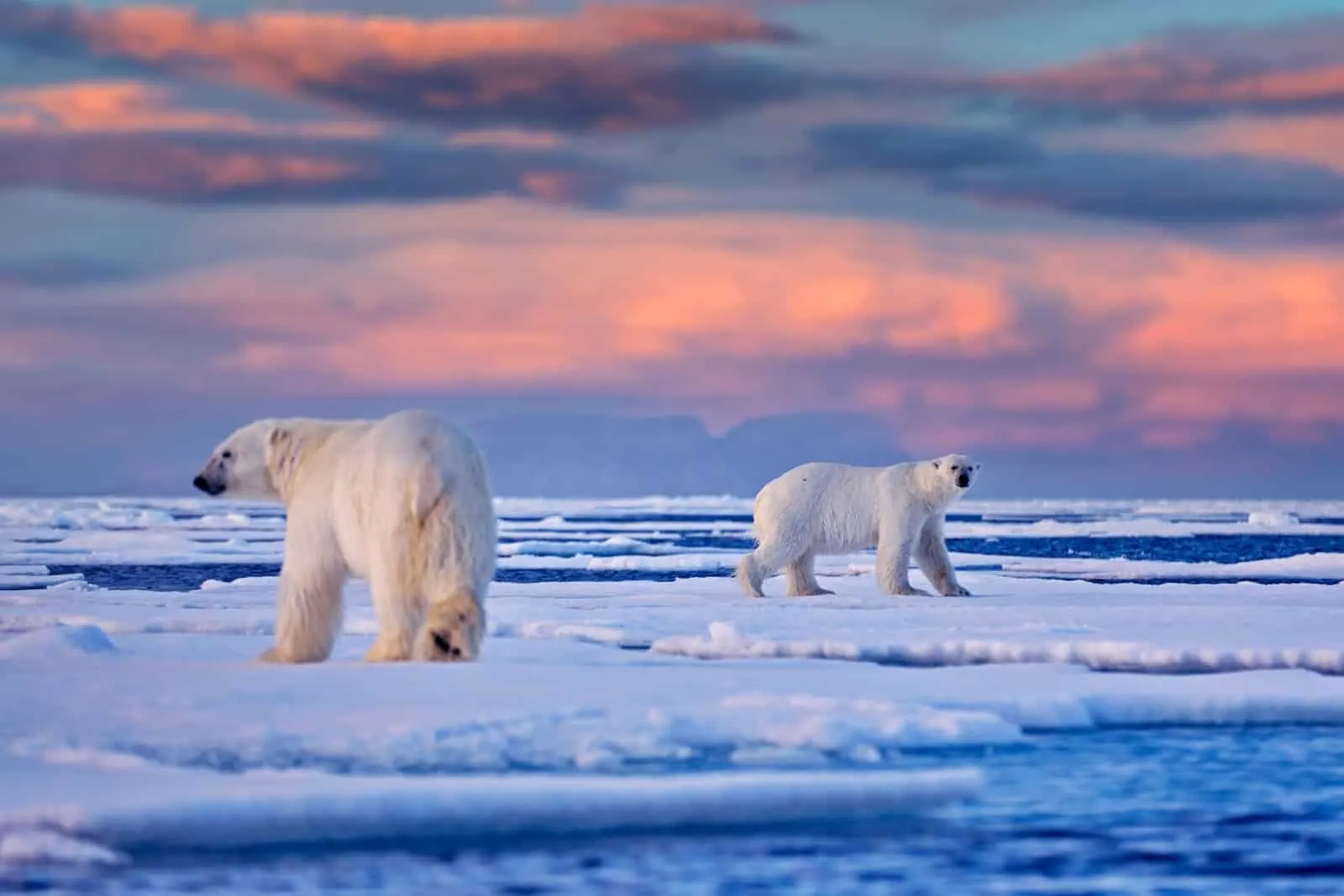
Image Credit: Shutterstock / Ondrej Prosicky
Venturing to Svalbard is where the Arctic’s stark beauty is on full display, offering an unparalleled connection to the polar wilderness. This remote archipelago, characterized by its rugged terrain, glaciers, and frozen tundras, is a sanctuary for an array of Arctic wildlife, including polar bears, reindeer, and walruses. The experience of exploring Svalbard is about witnessing the raw power of nature and understanding the delicate balance of life in extreme conditions. The midnight sun bathes the landscape in an ethereal glow during summer, while winter presents the mesmerizing dance of the Northern Lights across the sky. Activities such as dog sledding, ice caving, and snowmobile safaris offer adventurous ways to explore the vast wilderness. The main settlement, Longyearbyen, provides a cozy contrast to the wild outdoors with its warm cafes, museums, and galleries that narrate the archipelago’s rich history of exploration and coal mining.
Insider’s Tip: Summer brings the midnight sun, allowing for round-the-clock exploration. However, visiting in winter offers the magical spectacle of the Northern Lights.
When to Travel: March to May is ideal for witnessing the aurora borealis and experiencing snow-based activities, while June to September offers milder weather for hiking and wildlife spotting.
How to Get There: Flights to Longyearbyen are available from Oslo and Tromsø. Given its remote location, planning your journey well in advance is advisable.
2. Easter Island, Chile
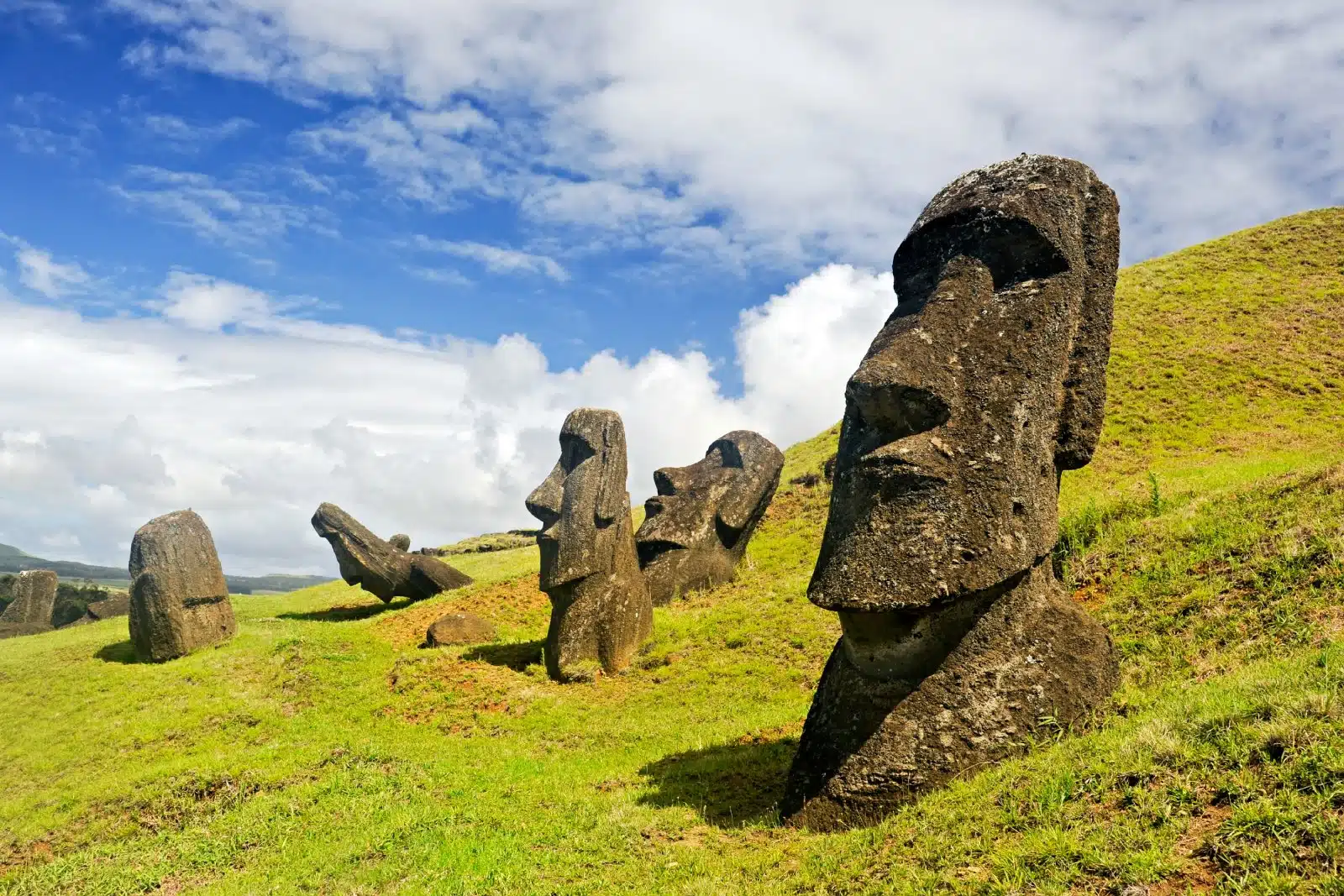
Image Credit: Shutterstock / Amy Nichole Harris
Easter Island highlights the mysteries of ancient civilizations. Known locally as Rapa Nui, this isolated island is famed for its moai statues, giant monolithic figures that have puzzled historians and archaeologists for centuries. The island’s volcanic craters, pristine beaches, and rugged cliffs offer a dramatic natural setting that complements its cultural heritage. Exploring Rapa Nui’s archaeological sites, such as Ahu Tongariki and Rano Raraku, provides insight into the island’s complex history and the remarkable civilization that once thrived in isolation. The cultural experiences give visitors opportunities to engage with the local Rapa Nui people, whose traditions and way of life are closely tied to their ancestors and the land. Whether hiking to the top of Terevaka for panoramic views or marveling at the petroglyphs at Orongo, Easter Island offers a profound journey into the heart of Polynesian culture and the enduring mysteries of human history.
Insider’s Tip: Renting a bike or scooter provides a flexible and intimate way to explore the island’s sites at your own pace.
When to Travel: The shoulder seasons of March to May and September to November offer pleasant weather with fewer tourists.
How to Get There: Flights to Easter Island depart from Santiago, Chile. The journey is long but rewards with an unparalleled island adventure.
3. Namib Desert, Namibia
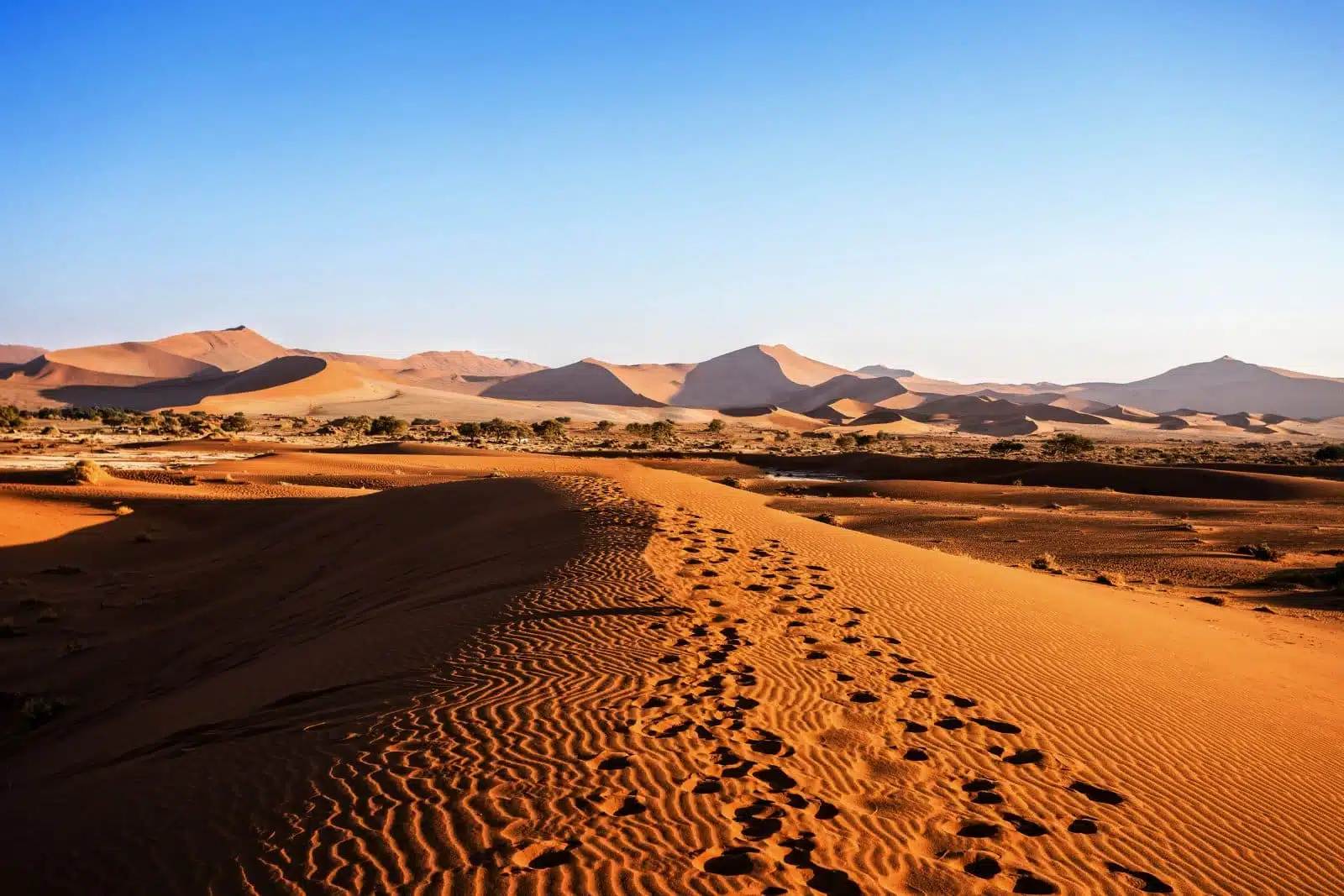
Image Credit: Shutterstock / Artush
The Namib Desert, stretching along Namibia’s coast, is an ancient landscape of stark beauty and extremes. Its towering dunes, some of the highest in the world, rise dramatically from the desert floor, their red sands shifting with the winds and glowing under the sun. Sossusvlei, a clay pan surrounded by these towering dunes, is a highlight, offering surreal vistas that blur the line between Earth and sky. Nearby, Deadvlei, with its stark white pan and centuries-old dead acacia trees, presents a hauntingly beautiful contrast against the backdrop of orange dunes and blue skies. The desert is also home to unique adaptations of life, such as the welwitschia mirabilis, a plant that can live for over a thousand years. Nighttime unveils a canopy of stars so vast and clear it has been designated a Dark Sky Reserve, offering some of the best stargazing on the planet.
Insider’s Tip: Climbing Big Daddy, the tallest dune at Sossusvlei, for sunrise offers a breathtaking view and cooler climbing conditions.
When to Travel: The cooler months of May to October are ideal for exploring the desert comfortably.
How to Get There: Fly into Windhoek, then embark on a road trip or a small aircraft flight to the desert region. The journey is integral to the experience, showcasing Namibia’s vast beauty.
4. Bhutan

Image Credit: Shutterstock / Khanthachai C
Bhutan, the last great Himalayan kingdom, is a place where happiness is valued above economic growth, and the preservation of culture and environment is woven into the fabric of society. This deeply Buddhist land offers serene monasteries, majestic fortresses (dzongs), and sacred mountains, which create a backdrop for a spiritual journey as much spiritual as it is physical. Trekking through Bhutan’s pristine landscapes, you’ll encounter lush valleys, dense forests, and rushing rivers, all teeming with life and untouched by modernity. The architectural feats such as the iconic Tiger’s Nest Monastery, perched precariously on a cliff face, and the imposing Punakha Dzong, are testaments to Bhutanese craftsmanship and religious devotion. Bhutan’s commitment to sustainable tourism means that your visit contributes to conserving its natural and cultural treasures. Engaging with the warm and welcoming Bhutanese people, you’ll gain insights into a way of life that prioritizes harmony with nature and spiritual well-being.
Insider’s Tip: Engage with a local guide to visit off-the-beaten-path monasteries and gain deeper insights into Bhutanese life and spirituality.
When to Travel: March to May and September to November offer the best weather for trekking and cultural festivals.
How to Get There: Flights to Paro are available from select cities in India, Thailand, Singapore, and Nepal. All visitors must book through a registered Bhutanese tour operator, adding to the exclusivity of the experience.
5. Patagonia, Argentina, and Chile
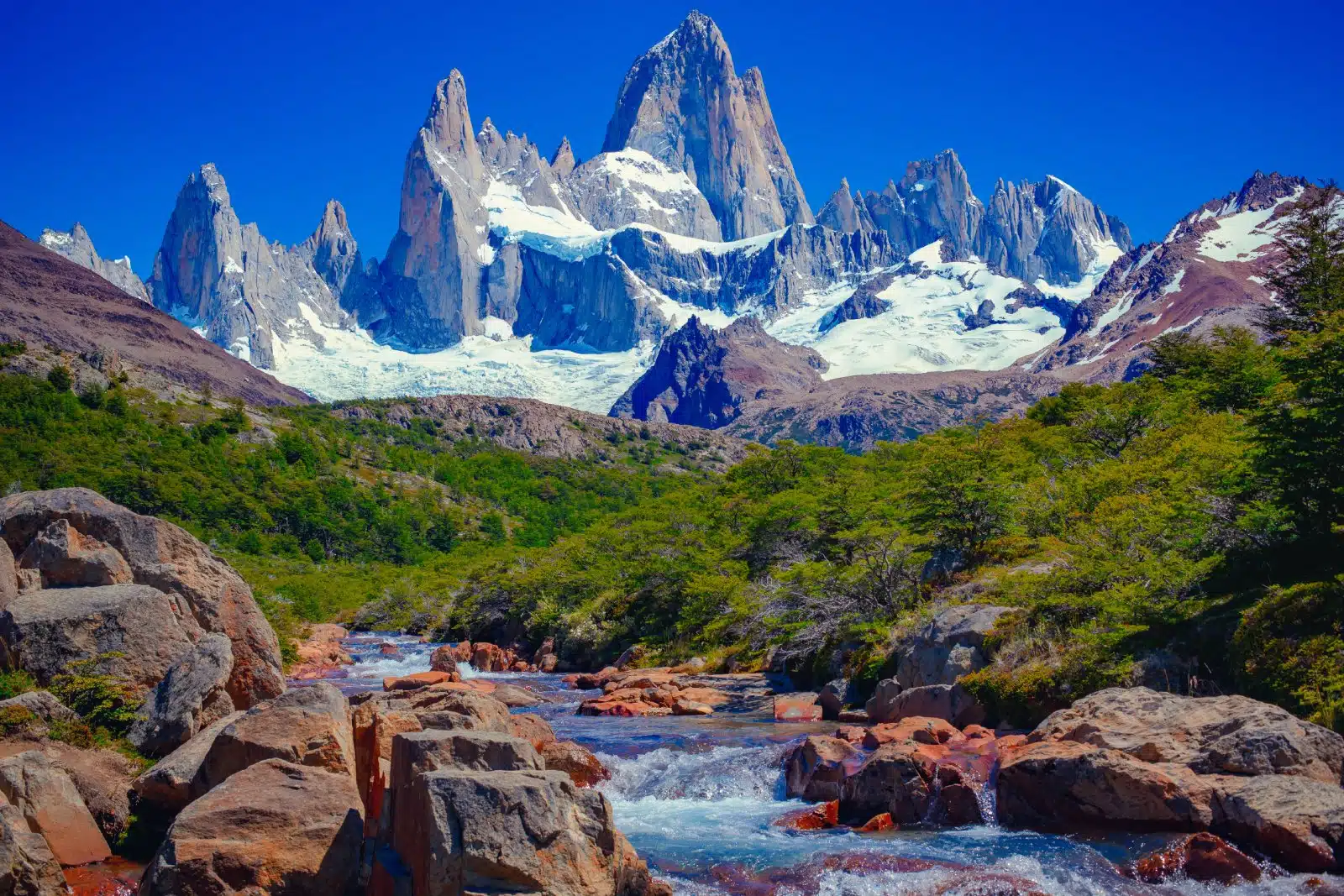
Image Credit: Shutterstock / Samuel Ericksen
Patagonia, straddling the southernmost tips of Argentina and Chile, is a land of breathtaking natural wonders and rugged wilderness. Its vast landscapes encompass towering mountain peaks, expansive steppes, and deep blue glaciers that calve into emerald lakes. The region is a haven for adventurers and nature lovers alike, offering some of the world’s most spectacular trekking, kayaking, and mountaineering experiences. Highlights include the iconic Torres del Paine National Park in Chile, with its famous granite towers, and Argentina’s Los Glaciares National Park, home to the stunning Perito Moreno Glacier. The remote beauty of Patagonia is matched by its rich biodiversity, including Andean condors, guanacos, and pumas. The region’s cultural heritage, from the indigenous Tehuelche people to the legacy of European settlers, adds depth to the natural splendor. Exploring Patagonia, whether on foot, by boat, or on horseback, offers a profound connection to the natural world and a reminder of the wild beauty that still exists at the edges of our mapped world.
Insider’s Tip: Consider a multi-day trek, such as the W Circuit in Torres del Paine National Park, for a comprehensive experience of Patagonia’s rugged beauty.
When to Travel: In the Southern Hemisphere, summer (December to February) is the warmest and most accessible time, though spring (September to November) and autumn (March to May) offer unique seasonal landscapes.
How to Get There: Fly into Buenos Aires or Santiago, followed by domestic flights to regional hubs like El Calafate or Punta Arenas. From there, overland travel or local flights can take you deeper into the wilderness.
6. The Amazon Rainforest
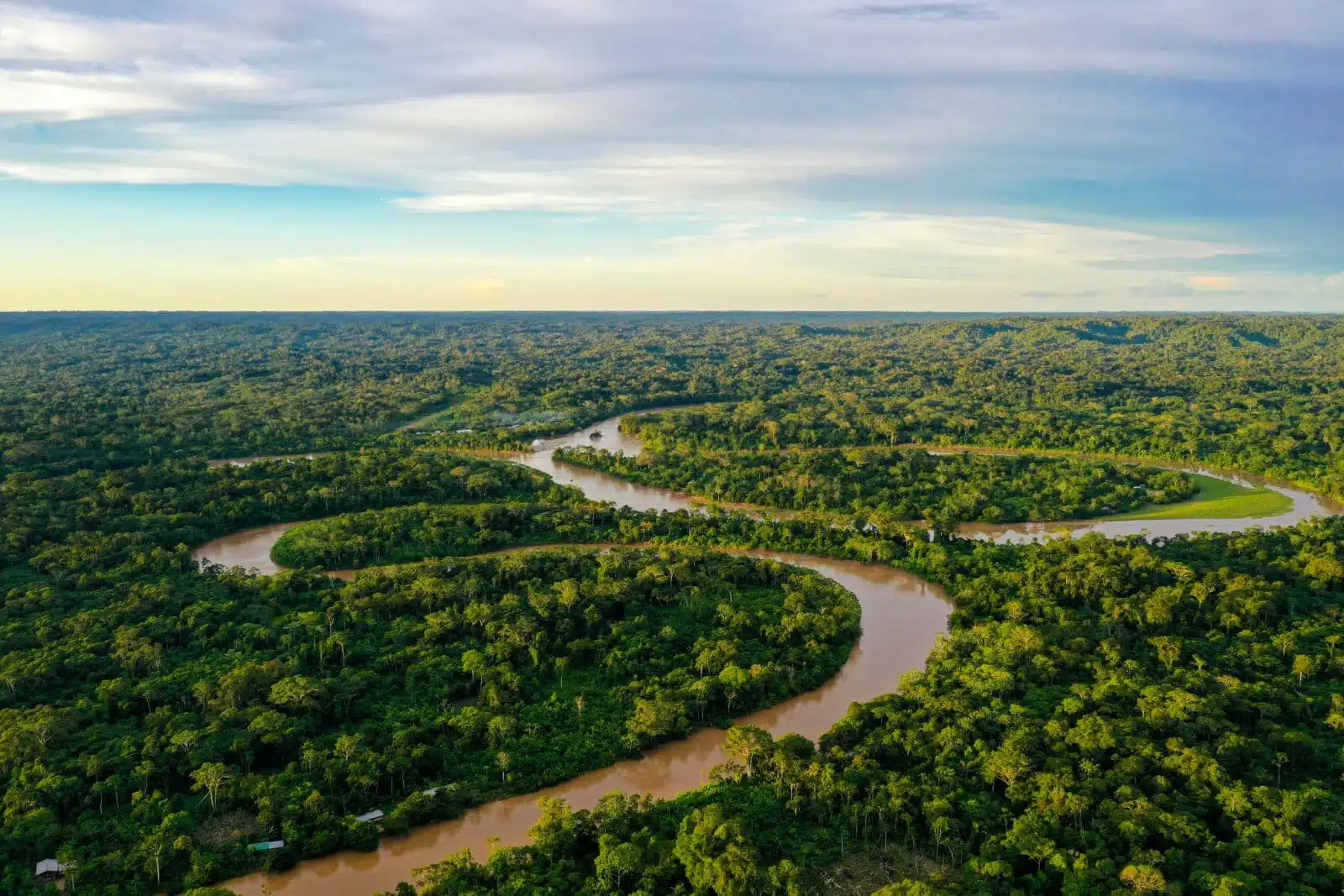
Image Credit: Shutterstock / Panga Media
The Amazon Rainforest, often described as the planet’s lungs, is an immense biome that spans nine countries in South America. This vast, biodiverse region is home to an unparalleled variety of life, including millions of species of insects, thousands of plants, and hundreds of mammals and birds, many of which are found nowhere else on Earth. Navigating the Amazon’s network of rivers and tributaries, you’ll encounter dense jungles teeming with life, from the smallest insects to the elusive jaguar. The canopy above buzzes with the sounds of life, a constant reminder of the rainforest’s vibrancy and vitality. Visiting indigenous communities provides a unique perspective on the Amazon, revealing a deep connection between the people and the rainforest that sustains them. These communities are guardians of the forest, living in ways that have adapted to the environment over thousands of years. The Amazon is a living, breathing ecosystem that offers profound lessons on biodiversity, conservation, and the interconnectedness of life. A journey into the Amazon is a journey into the heart of nature itself, offering an unparalleled experience of the world’s most famous rainforest.
Insider’s Tip: Staying in an eco-lodge allows for a deeper connection with the rainforest, with guided tours that highlight the ecosystem’s complexity and fragility.
When to Travel: The dry season from June to September is ideal for hiking and wildlife spotting, as lower water levels make more areas accessible.
How to Get There: Fly into major gateway cities like Manaus in Brazil, Quito in Ecuador, or Iquitos in Peru, from where you can embark on guided tours into the rainforest.
7. Antarctica
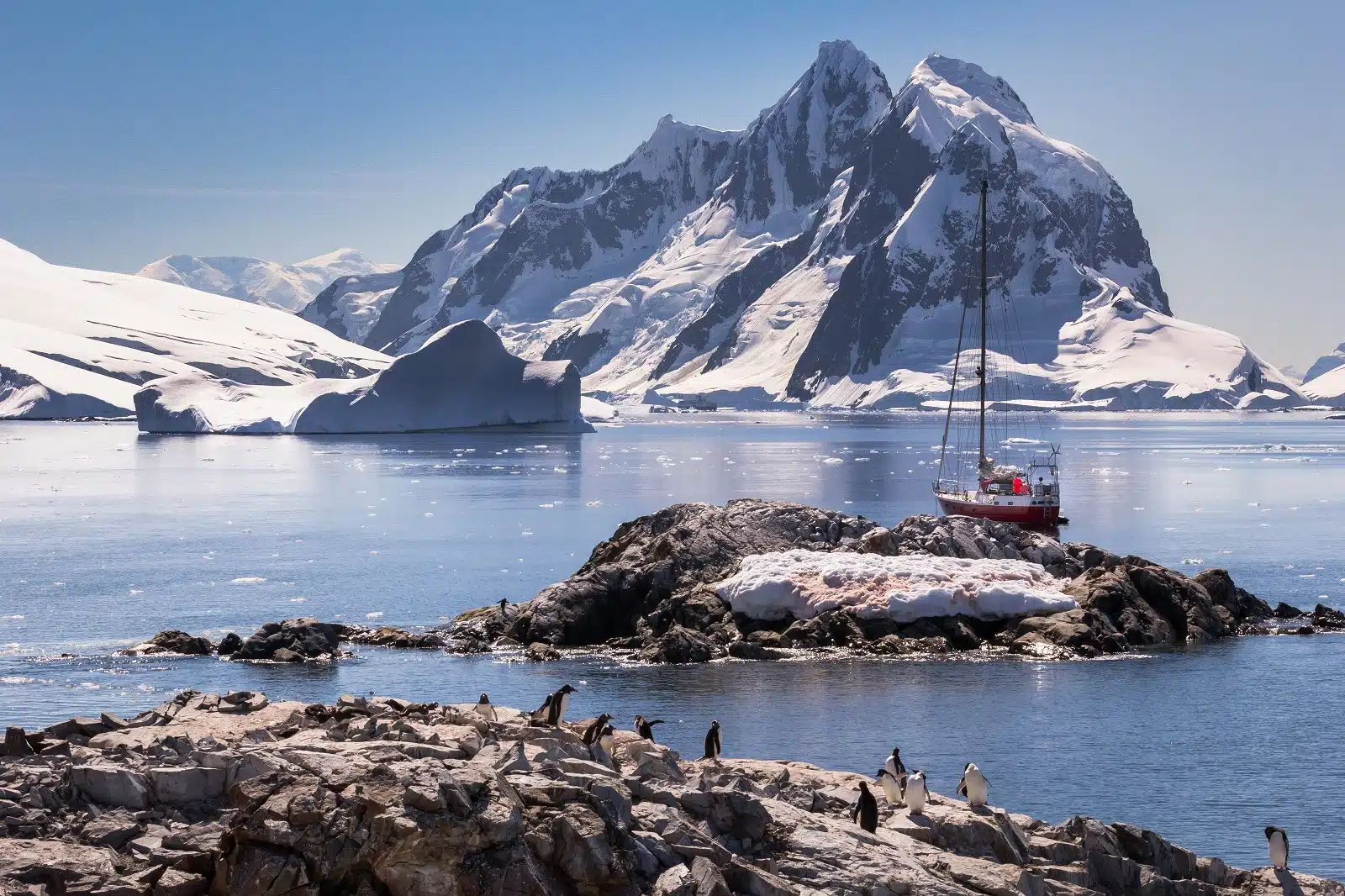
Image Credit: Shutterstock / Philipp Salveter
Antarctica, the southernmost continent, represents the ultimate frontier for those seeking to disconnect and immerse themselves in an environment of extreme natural beauty and isolation. This vast ice-covered landmass is hauntingly silent and dynamically alive, with glaciers calving into the sea, icebergs of unimaginable shapes and sizes, and an abundance of wildlife adapted to the harsh conditions. The continent’s stark white landscapes are home to millions of penguins, seals, and seabirds, offering unparalleled wildlife viewing opportunities. Scientific research stations scattered across the continent provide insight into the critical studies in fields ranging from glaciology to climate change, highlighting the importance of this remote wilderness in understanding global environmental processes. An expedition to Antarctica is an exploration of the last untouched wilderness on Earth, where the sheer scale of the landscape and the profound silence offer a perspective that is both humbling and exhilarating. The experience of setting foot on the continent, whether walking among penguin colonies or kayaking among icebergs, is a privilege that leaves a lasting impression of the fragility and beauty of our natural world.
Insider’s Tip: Choose an expedition cruise that offers kayaking or camping options for a more intimate encounter with Antarctica’s wilderness.
When to Travel: From November to March, the Antarctic summer is the only time ships can navigate its icy waters, offering the best conditions for wildlife viewing and exploration.
How to Get There: Expedition cruises depart from Ushuaia, Argentina, the southernmost city in the world. Reaching Ushuaia involves flying from Buenos Aires or other South American hubs.
8. Mongolia
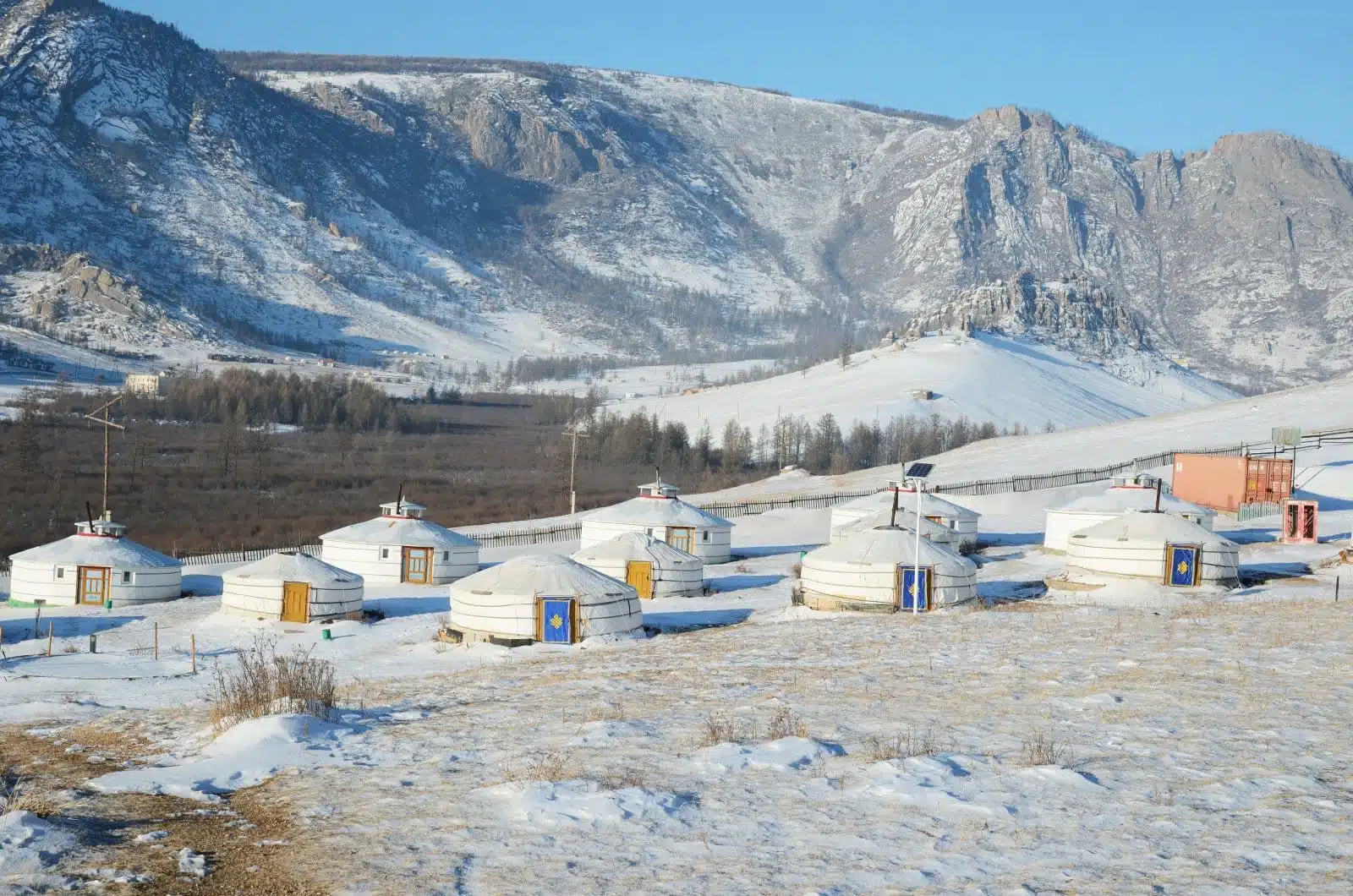
Image Credit: Shutterstock / Julia Baturina
Mongolia, a nation bordered by Russia to the north and China to the south, invites travelers into a vast expanse of untamed wilderness and nomadic culture that has remained largely unchanged for centuries. The country’s landscape is diverse with rolling steppes, rugged mountains, and the sprawling Gobi Desert, offering a sense of freedom and solitude that is increasingly rare in the modern world. The traditional nomadic lifestyle is at the heart of Mongolian culture, with families moving their gers (yurts) across the grasslands harmoniously with the seasons. Experiencing this way of life, whether through a homestay or a horse trek, provides a unique insight into the resilience and hospitality of the Mongolian people. The annual Naadam Festival, showcasing the “Three Manly Games” of wrestling, horse racing, and archery, celebrates Mongolian culture and heritage that draws visitors from around the globe. Mongolia’s vast, open landscapes and the nomadic way of life that thrives within them offer a journey back in time and a reminder of the enduring connection between humans and the natural world.
Insider’s Tip: Participate in a horse trek to experience Mongolia as the nomads do, moving across the landscape with a sense of freedom and connection to the land.
When to Travel: The summer months of June to August are the best time to visit, with warmer weather and numerous cultural festivals, including the Naadam Festival.
How to Get There: Fly into Ulaanbaatar from major Asian cities. From the capital, overland journeys can take you into the heart of Mongolia’s remote landscapes.
9. Faroe Islands
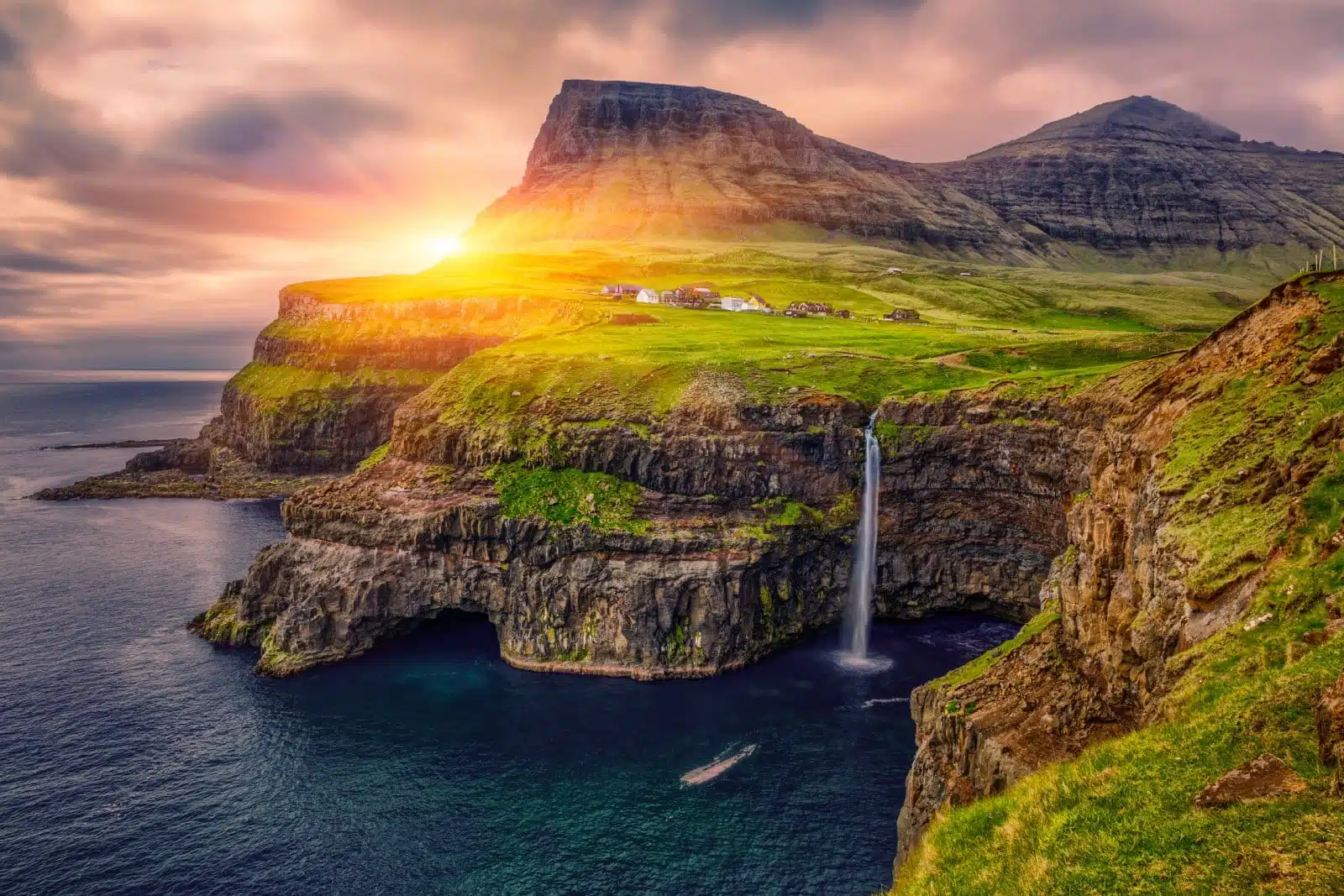
Image Credit: Shutterstock / Dmitry Pistrov
The Faroe Islands, an archipelago in the North Atlantic, is a patchwork of steep cliffs, green valleys, and rugged coastlines, where sheep outnumber people and the sea shapes daily life. This self-governing territory of Denmark is known for its dramatic landscapes, from the towering sea cliffs of Vágar to the picturesque village of Gjógv, with its natural harbor. The islands’ isolation has preserved a unique way of life and a rich cultural heritage that includes traditional Faroese music and dance. Birdwatching is a highlight, with the cliffs serving as nesting sites for numerous seabird species, including puffins. The Faroese weather is famously unpredictable, adding to the sense of adventure as fog and sunshine alternate with swift regularity. Hiking the numerous trails that crisscross the islands offers physical challenge, solitude, and a deep connection to the natural world. The Faroe Islands blend Scandinavian modernity and timeless wilderness, offering a retreat for those seeking cultural richness and natural beauty.
Insider’s Tip: Renting a car is the best way to explore the island’s diverse landscapes, from the historic village of Gjógv to the bird cliffs of Vestmanna.
When to Travel: The summer months of June to August offer the mildest weather and the best conditions for hiking and bird watching.
How to Get There: Fly to the Faroe Islands via Copenhagen or Reykjavik. The archipelago’s small size makes it easy to explore once you’ve arrived.
10. Greenland
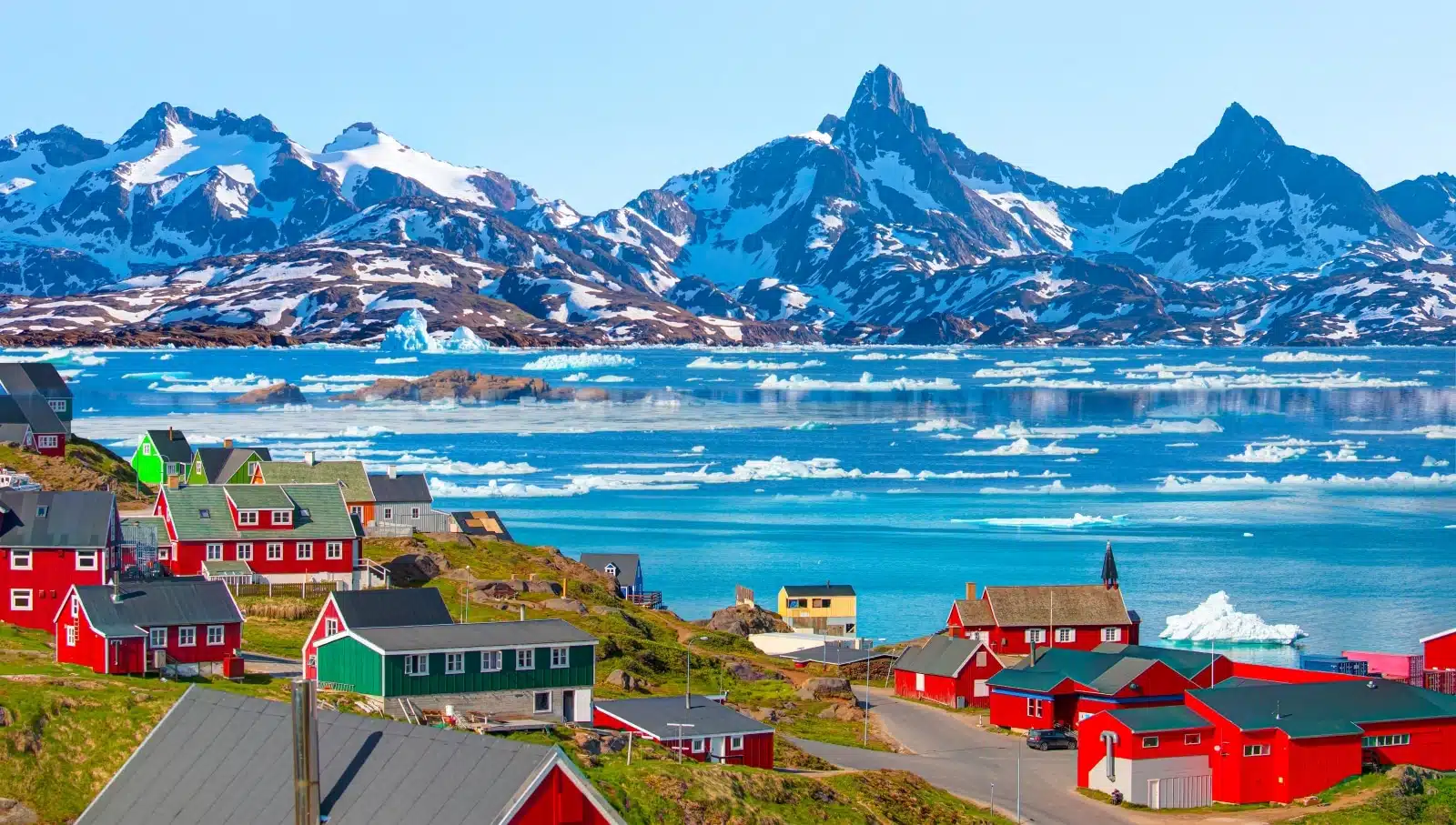
Image Credit: Shutterstock / muratart
Greenland, the world’s largest island, lies largely within the Arctic Circle and offers an extraordinary blend of Inuit culture and some of the most dramatic landscapes on Earth. Its ice sheet, second in size only to Antarctica’s, and its intricate fjord systems epitomize nature’s grandeur and power. The interior of Greenland is a vast expanse of ice, while its coastal areas are dotted with small communities that maintain a close relationship with the land and sea, relying on fishing and hunting for sustenance. Exploring Greenland can involve anything from kayaking among icebergs in the Ilulissat Icefjord, a UNESCO World Heritage site, to trekking the Arctic tundra in search of musk oxen. The Northern Lights are visible here from September to April, offering a spectacular display against the backdrop of Greenland’s pristine wilderness. Despite its challenging environment, Greenland is a place of incredible beauty and resilience, where traditional Inuit culture coexists with modern life and where the landscape is as awe-inspiring as it is unforgiving. The experience of visiting Greenland is about understanding the relationship between its people and the environment, a connection that has sustained them for generations.
Insider’s Tip: A boat tour through the ice fjords near Ilulissat offers a close-up view of icebergs calving from the glacier, a powerful reminder of nature’s force and beauty.
When to Travel: The short summer from June to August is the best time to visit, with opportunities for hiking, whale watching, and experiencing the midnight sun.
How to Get There: Fly to Greenland from Copenhagen or Reykjavik. Internal flights and boat services connect the island’s towns and villages.
11. Siberia, Russia
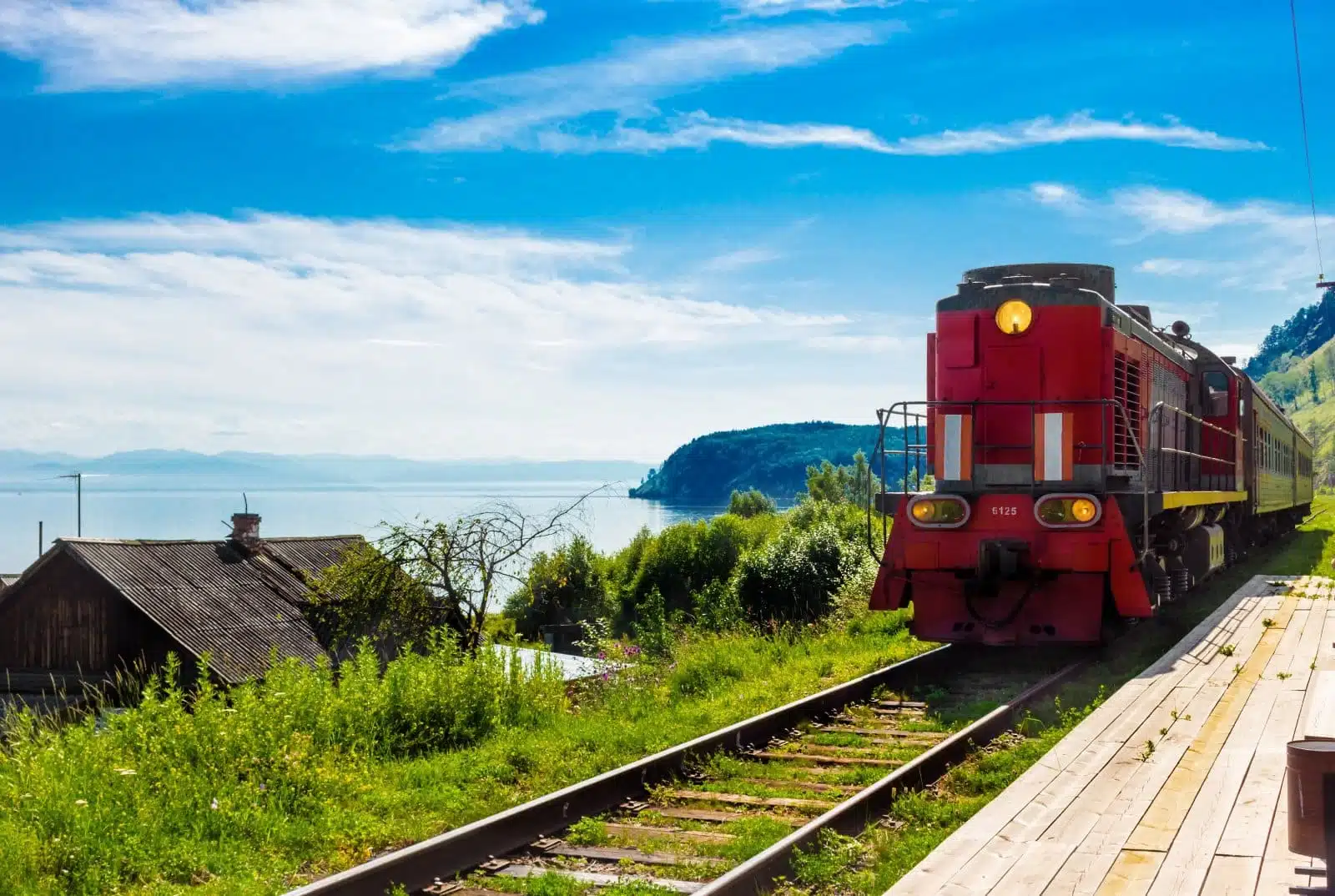
Image Credit: Shutterstock / Al.geba
Siberia, stretching from the Ural Mountains in the west to the Pacific Ocean in the east, is synonymous with remote wilderness and extreme conditions. This vast region of Russia covers more than 5.1 million square miles, encompassing a variety of ecosystems from taiga forests and mountain ranges to the Arctic tundra. Siberia’s natural beauty is both stark and sublime, with Lake Baikal, the world’s deepest and oldest freshwater lake, as one of its crown jewels. The lake is home to unique species and is surrounded by mountains and forests teeming with wildlife. The Trans-Siberian Railway, the longest railway line in the world, offers a unique way to experience the breadth of Siberia’s landscapes, connecting Moscow with the Russian Far East. Despite its reputation for harsh winters, Siberia is also a land of surprising biodiversity and natural wonders, including the Valley of Geysers in Kamchatka and the Altai Mountains. The indigenous peoples of Siberia, with their rich traditions and lifestyles adapted to the region’s extreme conditions, add a fascinating cultural dimension to its natural beauty. Siberia challenges the adventurous traveler with its remoteness and scale, offering an unparalleled opportunity to explore one of the planet’s last great wilderness areas.
Insider’s Tip: A stop at Lake Baikal allows for exploration of its crystal-clear waters and unique ecosystems. In winter, the lake freezes over, creating a surreal landscape for ice skating and snowmobiling.
When to Travel: Summer (June to August) is ideal for exploring Siberia’s natural beauty, while winter offers the allure of frozen landscapes and traditional winter sports.
How to Get There: The Trans-Siberian Railway connects Moscow to Vladivostok, with stops in major Siberian cities. International flights to Moscow or St. Petersburg are the first step on this epic journey.
12. The Australian Outback
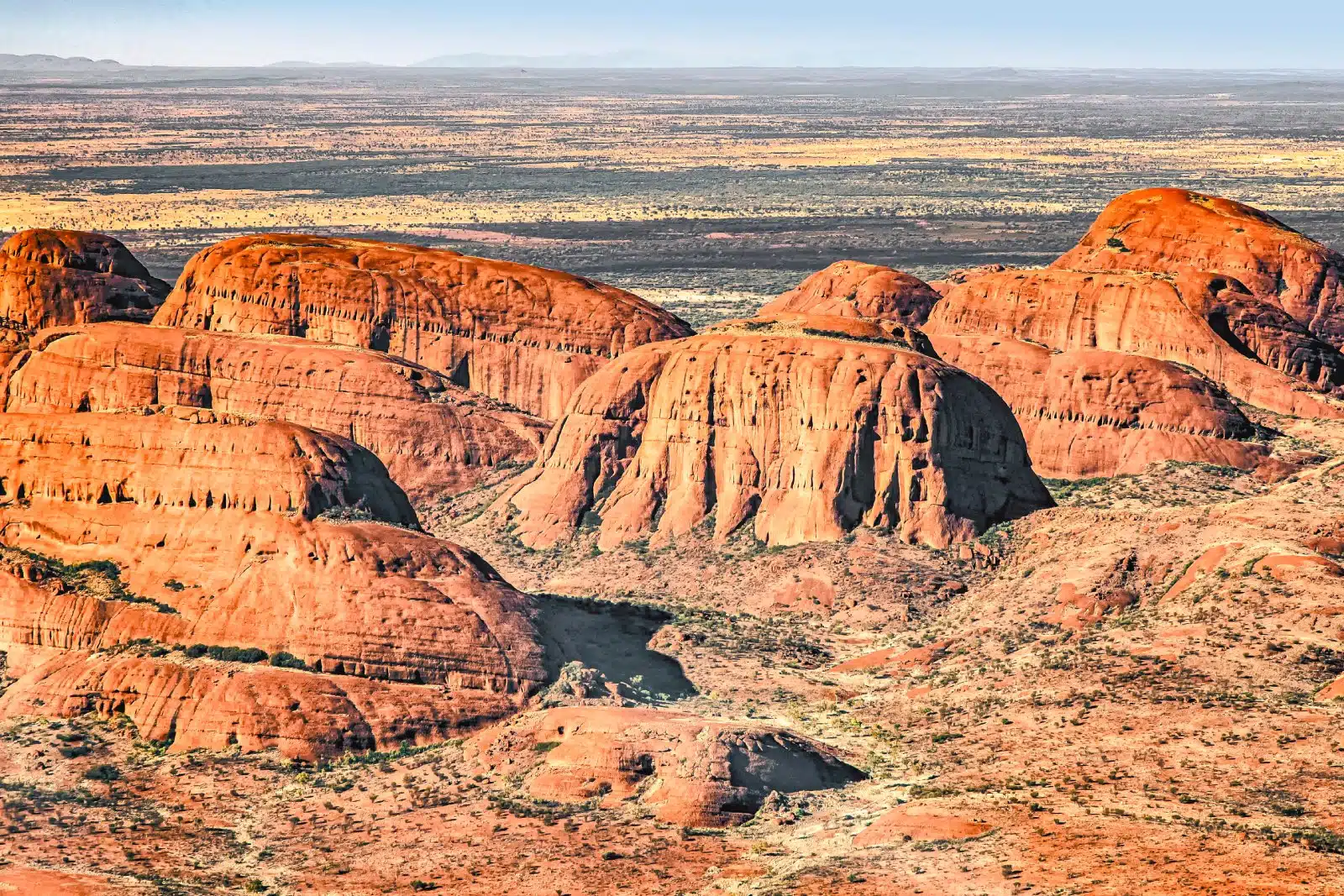
Image Credit: Shutterstock / wiesdie
Australia’s Outback is a vast, arid region covering much of the continent, starkly contrasting the bustling coastal cities. It’s a land of extremes, where the red desert sands meet the deep blue sky, and ancient rock formations tell stories of the Earth’s early history. The Outback is home to iconic landmarks such as Uluru (Ayers Rock) and the Olgas, sacred sites to the indigenous Anangu people and a testament to the spiritual connection between the land and its original inhabitants. Exploring the Outback, whether by road trip on the legendary Stuart Highway or trekking in the remote Kimberley region, offers an adventure into Australia’s heartland. The region’s sparse population and the vast distances between towns underscore the isolation and self-reliance that define the Outback way of life. The night sky in the Outback, free from light pollution, offers some of the best stargazing in the world, with the Milky Way stretching across the horizon.
Insider’s Tip: A guided tour with an Aboriginal guide offers invaluable insights into the land’s cultural significance and the ancient stories that have shaped it.
When to Travel: The cooler months of May to September are the most comfortable for exploring the Outback, avoiding the extreme heat of the summer.
How to Get There: Fly into Alice Springs or Darwin as a starting point for your Outback adventure. From there, road trips are a popular way to explore the region’s remote beauty.
The Bottom Line
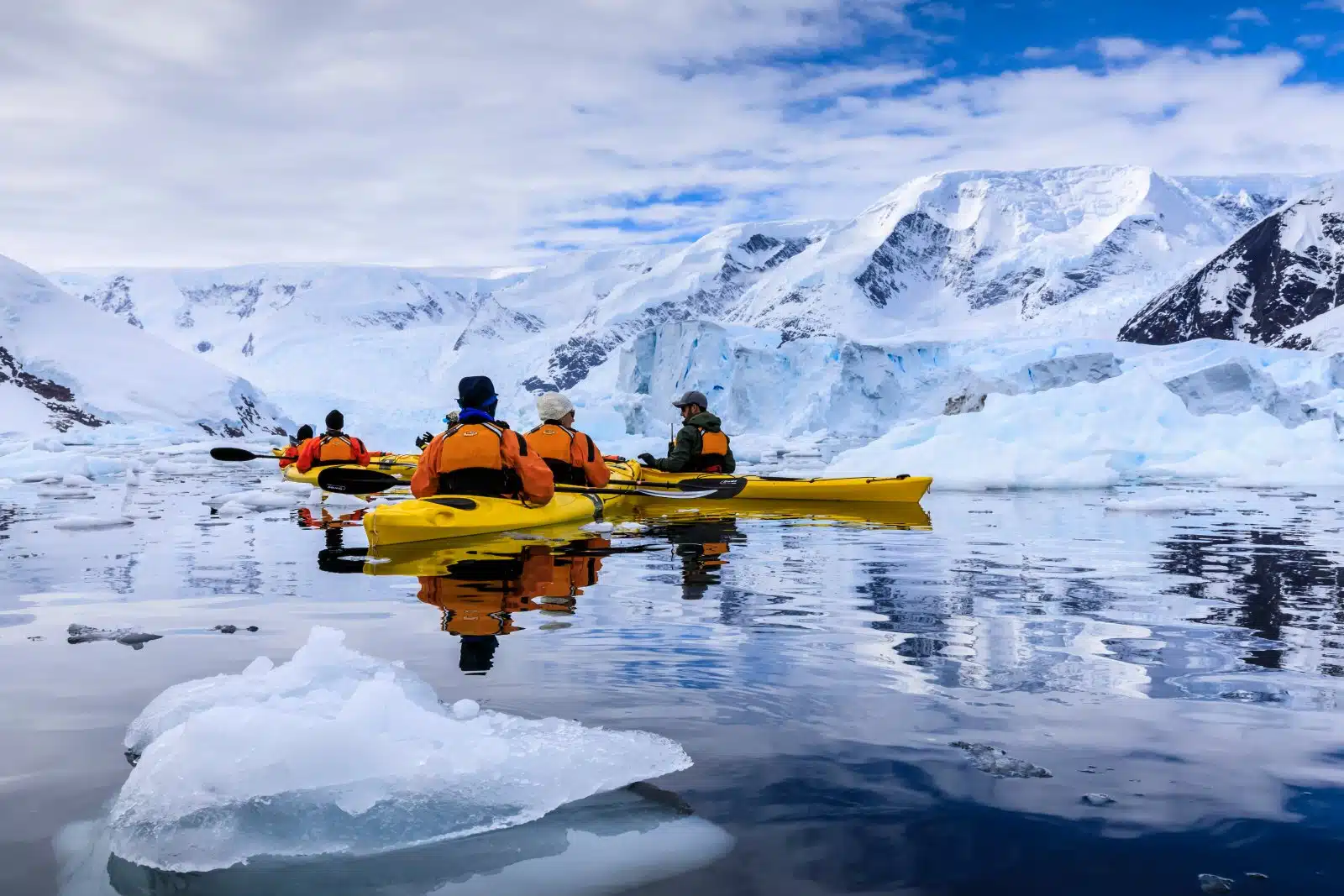
Image Credit: Shutterstock / Eleanor Scriven
Going off-grid around the world is not just about escaping the digital world; it’s a journey into the heart of what it means to be truly present. Each remote location offers a unique blend of natural beauty, cultural depth, and the kind of solitude that speaks to the soul. Whether you’re drawn to Antarctica’s icy silence, Bhutan’s spiritual peaks, or the Australian Outback’s ancient rhythms, the world’s remote corners offer a profound reminder of our place in the natural order.
More From The Green Voyage
Top 10 Trending Travel Destinations 2024
6 Essential Banking Apps for International Travel – Managing Your Finances on the Go
Traveling With Kids – 10 Tips to Create Memorable Family Holidays
The post The 12 Best Off-Grid Destinations Around the World – Enviable Remote Locations 2024 first appeared on The Green Voyage.
Featured Image Credit: Shutterstock / Sophie Dover.
For transparency, this content was partly developed with AI assistance and carefully curated by an experienced editor to be informative and ensure accuracy.
Tips for Trip Success
Book Your Flight
Find an inexpensive flight by using Kayak, a favorite of ours because it regularly returns less expensive flight options from a variety of airlines.
Book Your Hotel or Special Accommodation
We are big fans of Booking.com. We like their review system and photos. If we want to see more reviews and additional booking options, we go to Expedia.
You Need Travel Insurance!
Good travel insurance means having total peace of mind. Travel insurance protects you when your medical insurance often will not and better than what you get from your credit card. It will provide comprehensive coverage should you need medical treatment or return to the United States, compensation for trip interruption, baggage loss, and other situations.Find the Perfect Insurance Plan for Your Trip
